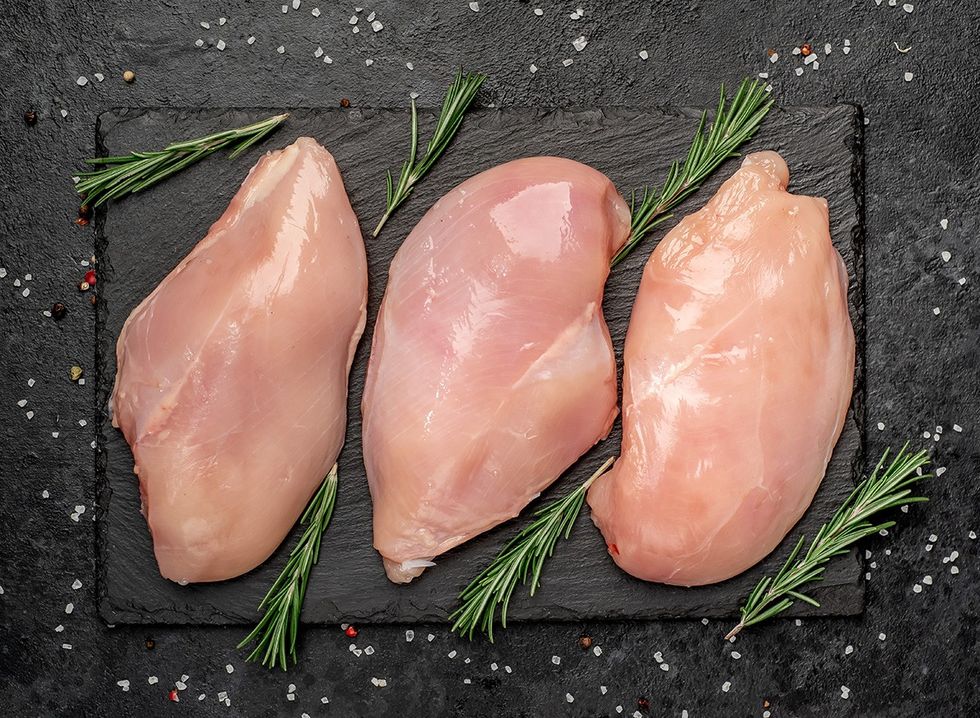Starting an exercise routine when you're significantly overweight can feel impossible. For Nicole Collet, a weight loss coach who lost an impressive 130 pounds and kept it off for nine years, the answer wasn't complicated—it was walking for just 15 minutes every day. "When I was morbidly obese, there wasn't much I could do in the form of exercise because of my weight, but I could walk," Nicole explains. Her journey proves that sustainable weight loss doesn't require counting every step or spending hours exercising—just consistent, manageable action that anyone can follow.
Forget Counting Steps, Focus on Time Instead
Nicole's initial mistake was obsessing over step counts rather than creating a sustainable habit. "I set a goal to walk 10,000 steps every single day, but I'm an all or nothing person. So I set it in stone," Nicole shares in her post. At 275 pounds with painful plantar fasciitis, this ambitious target quickly became overwhelming.
The solution was simple yet effective. "I decided to start with 15 minutes because it wasn't too low, but it wasn't too high," she says. This approach allowed her to go at her own pace, taking breaks when needed, while still maintaining consistency. By focusing on completing 15 minutes daily—regardless of distance covered—Nicole created a sustainable habit she could actually stick with.
RELATED:Here's How Long Your Incline Walking Workout Should Be To Shrink Belly Fat
Invest in Proper Footwear for Success
One critical lesson Nicole learned was the importance of proper shoes. "I had a flip-flop thing. And I thought it would be a great idea with plantar fasciitis at 275 pounds to try walking in flip-flops," Nicole recalls with amusement. This uncomfortable experience left her feet so sore she didn't want to walk again.
"Wearing really good supportive shoes and investing in good quality ones like New Balance or whatever feels good on your foot is really important," Nicole emphasizes. Good footwear helped alleviate her foot pain and allowed her to gradually increase her walking time as she progressed.
Don't Fall Into the "Too Much Too Soon" Trap
Going overboard with exercise intensity was another pitfall Nicole and her husband Kyle experienced. "When we first started, we tried to do way too much, way too intense, go way too far from the house, go longer than the 15 minutes, and we would end up just exhausted and sore," Nicole explains.
Even years into their fitness journey, they sometimes make this mistake. Nicole shares, "In the last summer, Kyle and I were doing a mini cut. We just were like, hey, we're in a calorie deficit. It'd be a great idea to go for a two-hour walk in the forest." The result was extreme hunger and exhaustion that derailed their progress. Finding a moderate, sustainable pace prevents this self-sabotaging cycle.
Find Your Sweet Spot: Not Too Little, Not Too Much
The opposite problem—doing too little—can be just as detrimental. "Whenever we would go overboard, because Kyle and I are all or nothing, black-or-white thinking kind of people, we'd pull way back and then we would go from like an hour to five minutes," Nicole admits.
This all-or-nothing approach extended to their eating habits too. "We'd be like well I think we both need a large pizza each... or the opposite and we'd be like okay we ate too much yesterday so now let's only eat like egg whites and tuna," she says. Finding a sustainable middle ground—not too intense, not too easy—proved key to their long-term success.
Combine 15 Minutes of Walking With Portion Control
Nicole's 50-pound weight loss in three months didn't come from walking alone. "I paired my walking of 15 minutes every day with portion control," she explains. This combination created the calorie deficit necessary for significant weight loss.
The dietary component is essential, according to Nicole. "It's very important that you are eating in a calorie deficit and adding some walking or exercise that you like to do as a cherry on top because the diet comes first." This balanced approach addresses both sides of the weight loss equation.
Build Consistency Before Increasing Time
Nicole's 15-minute walks gradually became easier as she lost weight. "By the end of the three months, I had lost the 50 pounds. I also had increased my stamina and I was lighter," Nicole shares. Eventually, she could walk the full 15 minutes without stopping and her plantar fasciitis improved.
Through consistent effort, Nicole and Kyle gradually built their endurance. "We went from 15 minutes to now doing 60 minutes. It took a long time, but we slowly built and that's because it's sustainable," she says. This slow-and-steady approach has helped them maintain their weight loss for nine years.
RELATED:10-Min Walking Workout Burns Fat at Home, Says Coach
Why 15 Minutes of Walking Works Better Than Other Exercises
After trying numerous exercise options, Nicole and Kyle found walking most effective for long-term weight management. "After everything we've tried, we have found walking to be the best for burning fat, helping us lose weight," Nicole explains.
The simplicity and accessibility of walking makes it ideal for sustainable weight loss. "Walking at a leisurely pace consistently not only helped us lose 130 pounds each but it's helped us keep the weight off for over nine years," Nicole says. This low-impact exercise allows for consistent daily activity without burnout or injury.
Make Your 15-Minute Walks Enjoyable, Not Punishing
Nicole emphasizes the importance of enjoying your weight loss journey. "Making weight loss fun, not making it a punishment, is one of those things that I realized," she shares. Choosing activities and foods you enjoy increases the likelihood of sticking with them.
As Nicole puts it, "Consistency over perfection, slow and steady wins the race. Pick something you can do for exercise and pick things you like to eat so that you can do it for life." This mindset shift transforms weight loss from a temporary diet into a sustainable lifestyle.
RELATED:12-3-30 Walking Method: 20 Proven Tips to Lose Weight Faster
The Mindset For Long-Term Success
Beyond physical changes, Nicole reminds us of the mental and emotional components of weight loss. "Remember friends that weight loss isn't just about the number on the scale. It's also about here and here—heart and mindset," Nicole encourages.Success comes from building sustainable habits that fit your life and preferences. "Fight through it. You can do it. Don't give up," Nicole advises. By focusing on consistency rather than perfection, anyone can achieve lasting weight loss results—starting with just 15 minutes of walking every day. And if you enjoyed this article, take advantage of these 15 Quick Ways to Lose Body Fat Percentage in a Week.













 Shutterstock
Shutterstock Bottom Line: Don’t Skip BreakfastShutterstock
Bottom Line: Don’t Skip BreakfastShutterstock Shutterstock
Shutterstock Shutterstock
Shutterstock Shutterstock
Shutterstock Shutterstock
Shutterstock


 alexx.fitt/TikTok
alexx.fitt/TikTok alexx.fitt/TikTok
alexx.fitt/TikTok alexxandra.fitt/Instagram
alexxandra.fitt/Instagram

 9 High-Protein Foods That Beat Eggs for Weight LossShutterstock
9 High-Protein Foods That Beat Eggs for Weight LossShutterstock Slow Cooker Buffalo ChickenShutterstock
Slow Cooker Buffalo ChickenShutterstock Eat This for Breakfast to Burn More Fat, Says Nutrition ExpertShutterstock
Eat This for Breakfast to Burn More Fat, Says Nutrition ExpertShutterstock
 Shutterstock
Shutterstock Bonus Tip: Look Out for Hidden CaloriesShutterstock
Bonus Tip: Look Out for Hidden CaloriesShutterstock Shutterstock
Shutterstock Eggs and Egg Whites: The Complete Protein PackageShutterstock
Eggs and Egg Whites: The Complete Protein PackageShutterstock Shutterstock
Shutterstock Plain Greek YogurtShutterstock
Plain Greek YogurtShutterstock SpinachShutterstock
SpinachShutterstock Stick to Certain ProteinsShutterstock
Stick to Certain ProteinsShutterstock Shutterstock
Shutterstock BerriesShutterstock
BerriesShutterstock
 Shutterstock
Shutterstock Shutterstock
Shutterstock

 Target Side Core MusclesShutterstock
Target Side Core MusclesShutterstock 7. The Modified BeetleShutterstock
7. The Modified BeetleShutterstock